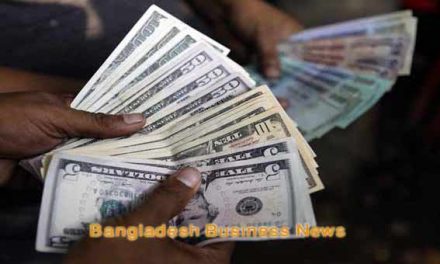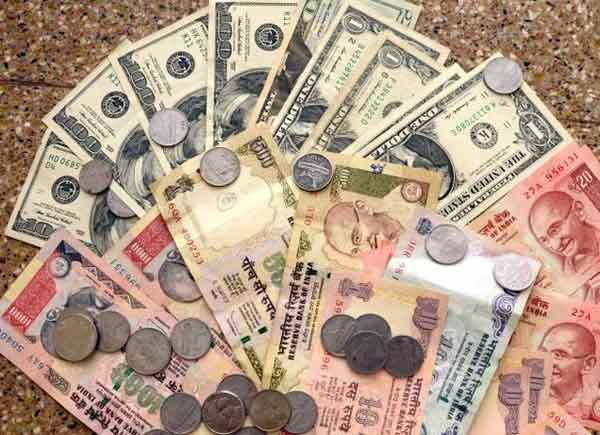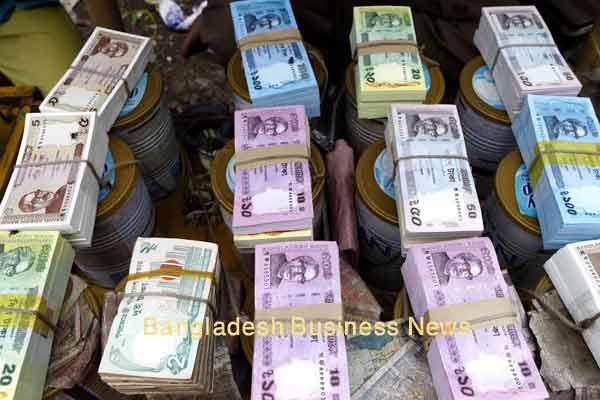Dhaka, Bangladesh (BBN)– Bangladesh Taka (BDT) depreciated marginally by 0.39 per cent against the US dollar (USD) following a rising demand for the greenback in the last couple of months, the Citibank N.A. said on Saturday.
By the end of September last the banks stopped to queue up daily for selling their foreign exchange holdings to the central bank, but now they are occasionally buying the foreign exchange from the Bangladesh Bank (BB), the country’s central bank, to meet the growing demand for the greenback.
“From October the BDT started to depreciate marginally. At the end of 2009, the USD/BDT rate hovered around 69.20, marking a depreciation of only 0.39 per cent from the opening level of 2009,” the US banking giant Citibank, N.A. said in its annual market update, released in the capital, Dhaka on Saturday.
With a lower demand for foreign exchange for import payments mostly due to falling commodity prices and a robust supply of the greenback thanks to the relatively stable export growth and workers’ remittance, the BDT has gained commendable strength in 2009 contrary to the other Asian currencies.
The central bank of Bangladesh also acted to keep the exchange rate of BDT broadly stable and retain the external competitiveness with continuous purchase of USD from the commercial banks directly.
“This led to a stable foreign exchange market with BDT trading at around 69.06 until the end of September, 2009,” the Citibank, N.A. added.
Quoting data on import letters of credit (LC) for the July-November period and export data for July-October 2009, the US bank said there was no significant upturn or slackening in economic activities in the last two quarters of 2009 relative to earlier quarter, but signs started emerging that output activities will pace up from early 2010 onwards.
A slackening credit growth during the early part of the year left the market with surplus liquidity, leading the inter-bank call money rate to come down significantly.
The call money rate, which hovered around 10 per cent in January, came down to nearly 8 percent by the end of the first quarter, according to the update.
To ease the credit condition in the backdrop of domestic lower inflation and global recessionary situation, the country’s central bank also reduced the rate on repurchase agreement (repo) and reverse repo by 25 basis point to 8.50 per cent and 6.50 per cent from 8.75 per cent and 6.75 per cent respectively on March 11, 2009.
The following six months saw the call money rate dip towards near zero levels, with most of the deals settling within 0.1 to 0.25 percent, as the BB temporarily stopped taking away money from the market through its reverse repo window.
However, from early August 2009, the central bank resumed its auction of 30-day BB bills to mop up some of the excess liquidity that prevailed in the market.
“Subsequently, BB’s repo and reverse repo operations also resumed in October 12, 2009 with the rates realigned to 4.5 and 2.5 per cent respectively in order to increase economic activity following lower credit demand and excess liquidity in the money market during the previous two quarters,” the Citibank update added.
Since then call money rates took its queue from the repo rates and settled around 4 per cent level to close the year.
On the other hand, the government securities’ yield curve went through a major downward shift in 2009. Rates for government securities of all tenors dropped by 280 to 563 basis points (bps) from their January levels.
The yields, generally known as interest rates, of short-end bills with 91 days, 182 days and 364 days tenor dropped by 563 bps, 462 bps and 399 bps respectively, the update noted.
However, rates of mid and long-end government bonds with 5 years, 10 years, 15 years and 20 years tenor declined 280 bps, 297 bps, 345 bps and 390 bps respectively.
The decline in yield was highest in the 91 days bill which lost 563 bps.
BBN/SS/SI/AD-27December09-2:55 pm (BST)









